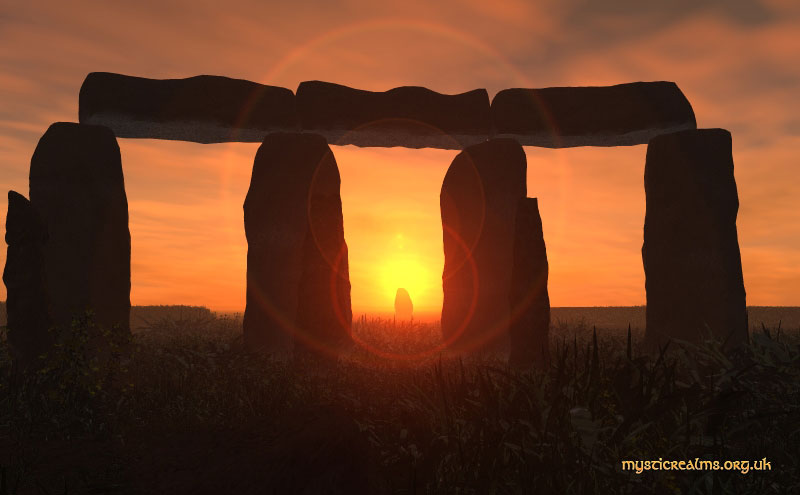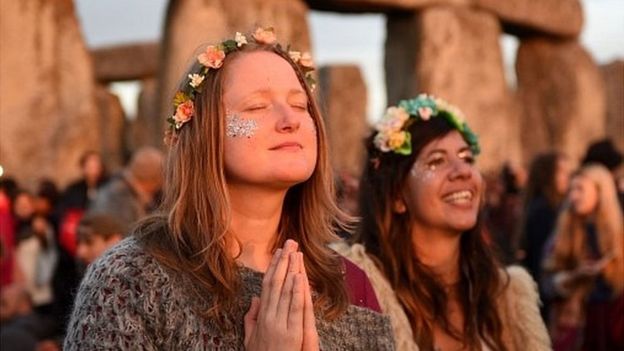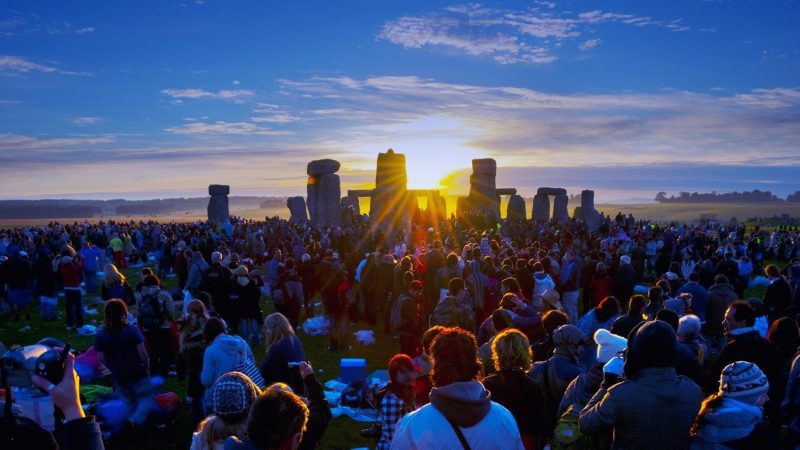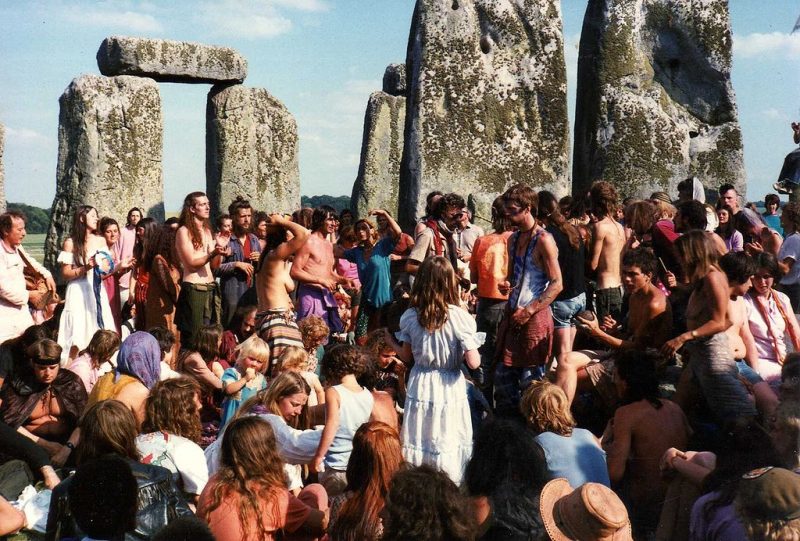Summer solstice at Stonehenge
Why do people gather at Stonehenge in England on the solstice? Info and photos here.

View of the Heel Stone at summer solstice sunrise, as seen from inside the Stonehenge monument. Image via mysticrealms.org
It’s summer solstice time for us in the Northern Hemisphere. This solstice occurs at the instant the sun reaches its most northerly point on the celestial sphere, the imaginary sphere of stars surrounding Earth. In 2016, solstice came on June 20, 2016 at 22:34 UTC.
Read more about the 2106 June solstice.
Stonehenge was built in three phases between 3,000 B.C. and 1,600 B.C. and its purpose remains under study. However, it’s known that if you stand in just the right place inside the Stonehenge monument on the day of the northern summer solstice, facing north-east through the entrance towards a rough hewn stone outside the circle – known as the Heel Stone – you will see the sun rise above the Heel Stone, as illustrated in the image at the top.

The BBC reported that about 12,000 people attended the neolithic site in Wiltshire to watch the sun rise at on June 20, 2016. Image via BBC
In the Northern Hemisphere at this time of year, the sun is shining on us most directly at midday. Except at high northerly latitudes, above the Arctic Circle – where daylight is continuous for many months – the day on which the summer solstice occurs is the day of the year with the longest period of daylight. Meanwhile, it is the shortest day for Earth’s Southern Hemisphere.
At the northern summer solstice – always around June 20 – the sun’s path stops moving northward in the sky. For us in the northern hemisphere, it’s the day on which the days stop growing longer and will soon begin to shorten again. For this reason, in festivals and celebrations across this hemisphere of Earth, the summer solstice is a time of celebration.

Summer solstice at Stonehenge via stonehengetrips.com

The Stonehenge Free Festival was a British free festival from 1974 to 1984 held at Stonehenge during the month of June, and culminating on the summer solstice. The festival was a celebration of various alternative cultures. The Tibetan Ukrainian Mountain Troupe, The Tepee People, Circus Normal, the Peace Convoy, New Age Travellers and the Wallys were notable counterculture attendees. Image via Wikipedia
Stonehenge is tied to the winter solstice, too. At Stonehenge in England on the day of the northern winter solstice (always around December 20), people watch as the sun sets in the midst of three great stones – known as the Trilithon – consisting of two large vertical stones supporting a third, horizontal stone across the top.
In the case of Stonehenge, this great Trilithon faces outwards from the center of the monument, with its smooth flat face turned toward the midwinter sun. In fact, the primary axes of Stonehenge seems to have been carefully aligned on a sight-line pointing to the winter solstice sunset.

EarthSky Facebook friend Buddy Puckhaber of South Carolina took this photo of Stonehenge in the early morning, while visiting. He said, “My wife and I were among the first visitors of the day.” Thank you, Buddy!
This Stonehenge monument – built in 3,000 to 2,000 BC – shows how carefully our ancestors watched the sun. Astronomical observations such as these surely controlled human activities such as the mating of animals, the sowing of crops and the metering of winter reserves between harvests. Stonehenge is perhaps the most famous of of the ancient astronomical monuments found around the world.
When Stonehenge was first opened to the public it was possible to walk among the stones – even climb on them.
The stones were roped off in 1977 as a result of serious erosion. Today, visitors to the monument are not permitted to touch the stones, but, if you go, you will be able to walk around the monument from a short distance away. Visitors can also make special bookings to access the stones throughout the year.

Another beautiful shot of Stonehenge from our friend Buddy Puckhaber. Thank you, Buddy.
Enjoying EarthSky? Sign up for our free daily newsletter today!
Bottom line: If you stand at just the right spot inside the Stonehenge monument on the day of the northern summer solstice, facing northeast through the entrance towards a rough hewn stone outside the circle – known as the Heel Stone – you will see the sun rise above the Heel Stone. The 2016 June solstice comes on June 20, 2016 at 22:34 UT.
The winter solstice as seen from Stonehenge
http://earthsky.org/earth/gallery-the-summer-solstice-as-seen-from-stonehenge